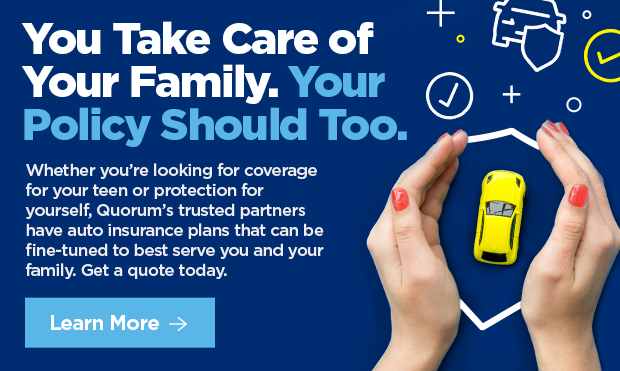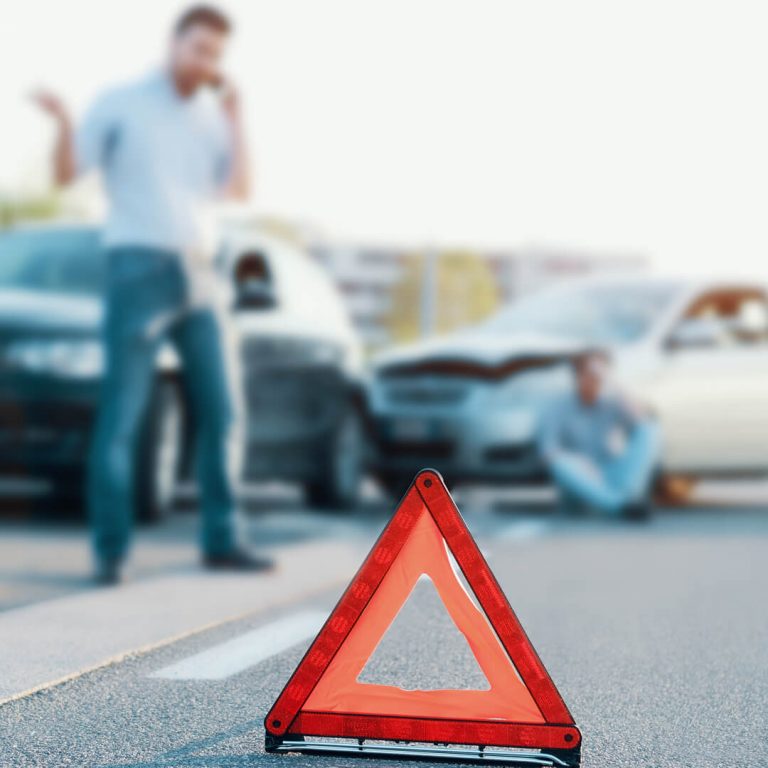Nobody expects to be in a car crash until it happens. Then, shock and adrenaline make it hard to remember what you should and shouldn’t do if you’re the driver. Given the National Highway Traffic Safety Administration’s (NHTSA) report that over 6 million car crashes now occur each year, it’s a good idea to be prepared just in case it happens to you. Let this car accident checklist be your guide.
What to Do When You’re in a Car Accident
After first checking to see if you or anyone else is injured, follow these steps:
1. Call for help.
Regardless of whether the accident is major or minor, you should notify law enforcement. If someone is injured, the vehicle is on fire or there is another need for emergency assistance, dial 911. Otherwise, you can call the local police department.
Tell the officers who arrive on scene everything you remember about the accident and its aftermath, while also asking for their names and badge numbers. Plus, find out when and how you can get a copy of the police accident report, which you’ll need to process an insurance claim for the crash.
2. Get to a safe place.
Turn your hazard lights on to alert passing and oncoming traffic. Follow the instructions of the 911 operator or police dispatch about whether or not to move your car. If they tell you to move it, park your vehicle out of traffic’s way, and then you and your passengers should find a safe place away from the road to wait for help.
3. Exchange information with the other driver(s).
Be ready to share your name, contact and insurance information with any other drivers involved in the accident and gather the following information from them:
- Full name
- Phone number
- Driver’s license number
- Vehicle license plate number
- Vehicle registration information, including the VIN number
- Insurance company and policy number
- Vehicle’s make, model and color
If the other vehicle is not registered in the driver’s name, find out their relationship to the owner.
4. Talk to any witnesses.
If other passersby saw the accident and stopped to help, ask for their name and phone number and get them to provide a description of what they saw so that you can share this with the police and the insurance companies.
5. Document everything.
In addition to documenting the other driver’s pertinent information, it’s also important to note everything you can about the accident while it’s still fresh in your mind. Using pen and paper, your phone or your insurance company’s mobile app, jot down all the key details, including:
- Time and location of the accident
- Number of vehicles involved
- Number of passengers in each vehicle
- Unusual weather and road conditions
With your phone, take pictures of your vehicle from various angles, making sure to capture all damage caused by the accident. Do the same for the other vehicles involved. If there are skid marks or debris from the accident, photograph that as well, along with anything else that may have contributed to the accident, such as road construction, a stalled car or other obstruction.
6. Notify insurance companies.
Even if you don’t think you’ll file an insurance claim, you should still call your insurance company about the accident as soon as possible and give them all the details. This is generally a condition of auto policies and not notifying your carrier could affect your coverage if you decide to file a claim later on. Make a similar call to the other driver’s insurance company. This way if either of you files a claim, both insurance companies are aware of the accident and have your statement describing it.
7. Be aware some states have particular rules about car accidents.
It’s also a good idea to ask the police officer responding to the crash or your insurance carrier if there are any particular requirements in the state where the accident occurred. For instance, New York law says that when accidents occur in that state , you must file an accident report with the New York Department of Motor Vehicles (NYDMV) within 10 days if there’s at least $1,000 in injury or damage caused by the crash.
What Not to Do When You’re in a Car Accident
Here are some key things to avoid doing after a car crash:
- Don’t leave the scene without notification: Although the penalties may vary by state, it is a crime in most instances to leave the scene of the accident, especially if someone is injured or there is property damage.
- Don’t move the seriously injured: Unless it’s necessary, such as in the case of a fire, moving them could cause further harm.
- Don’t share unnecessary information: The other driver doesn’t need your social security number, coverage limits or any other private information beside what’s listed above.
- Don’t discuss or take responsibility for the accident: Protect yourself by letting the police file their report, letting them (and the insurance companies) determine who’s at fault for the crash.
For help making sense of different types of insurance, including auto policies, check out this Comprehensive Guide to Insurance Coverage.
Editor’s note: Quorum is not affiliated with any of the companies mentioned in this article and derives no benefit from these businesses for placement in this article.






Through the lens of worn-out tires and rusty frames, the dance of unexpected collisions can be daunting. While us junkers may have faced our final skid, the information here serves as a beacon for drivers still revving their engines. The checklist, almost like a car manual, provides a clear path amidst the chaos of crumpled metal and shattered glass. Remember, every twist of the ignition comes with a responsibility, and having these tips in the glovebox is a sign of a prepared traveler. Stay safe and tread wisely.